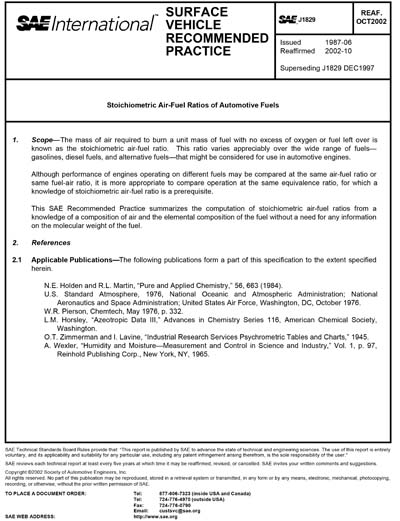Historical
SAE J 1829-2002 (SAE J1829-2002)
Stoichiometric Air-Fuel Ratios of Automotive Fuels
The mass of air required to burn a unit mass of fuel with no excess of oxygen or fuel left over is known as the stoichiometric air-fuel ratio. The ratio varies appreciably over the wide range of fuels--gasolines, diesel fuels, and alternative fuels--that might be considered for use in automotive engines. Although performance of engines operating on different fuels may be compared at the same air-fuel ratio or same fuel-air ratio, it is more appropriate to compare operation at the same equivalence ratio, for which a knowledge of stoichiometric air-fuel ratio is a prerequisite. This SAE Recommended Practice summarizes the computation of stoichiometric air-fuel ratios from a knowledge of a composition of air and the elemental composition of the fuel without a need for any information on the molecular weight of the fuel.
Content Provider
Society of Automotive Engineers [sae]






